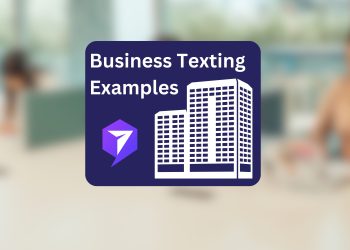Real estate professionals need to keep up with the fast-paced world today by using innovative methods to reach their clients and prospects quickly and effectively. SMS marketing is a powerful tool that they can use to connect with potential buyers and sellers in a more personal and immediate way. However, it is essential to craft the right text message follow-up scripts to maximize the impact of this strategy. This article provides detailed guidance and examples of practical real estate text message follow-up scripts using SMS marketing templates.
Power of SMS Marketing in Real Estate
The Rise of SMS Marketing
With the increasing use of mobile devices, SMS marketing has become a prominent channel for real estate agents to engage with their audience. Text messages have an astounding open rate of over 98%, making them an ideal medium to ensure that your messages reach your clients promptly.
Benefits of SMS Marketing in Real Estate
– Instant communication: SMS messages have an immediate reach, enabling agents to connect with prospects in real-time, leading to faster responses.
– High engagement: Text messages are short and to the point, making it more likely for recipients to read and respond to them.
– Personalization: SMS marketing allows real estate agents to personalize messages, creating a sense of individual attention for clients.
– Easy call-to-action: SMS messages can contain links or prompts, making it simple for recipients to take action, such as visiting a property website or scheduling a viewing.
Real Estate Text Message Follow-Up Scripts
Greeting and Personalization
A warm and personalized greeting is crucial for building rapport and making the message feel more human. Address the recipient by name and mention any previous interactions to establish a connection.
Example:
“Hello [Client’s Name], this is [Your Name] from [Your Real Estate Agency]. We recently spoke about your interest in finding a new home, and I have an exciting update for you!”
Offering Value
Provide valuable information or a compelling reason for the recipient to continue engaging with your message. It could be a new property listing, market insights, or a special promotion.
Example:
“Great news! A stunning two-bedroom condo just hit the market in [Desirable Neighborhood]. It perfectly matches your preferences and budget. Want to know more?”
Call-to-Action (CTA)
Include a clear and straightforward call-to-action to prompt the recipient to take the desired action, such as visiting a property website, scheduling a showing, or subscribing to your newsletter.
Example:
“To see photos and more details about the condo, click here [insert link]. Let’s schedule a viewing at your earliest convenience.”
Creating Urgency
To motivate quick responses, use language that implies urgency or scarcity. This technique can be particularly effective in driving potential buyers to take action promptly.
Example:
“This property generates much interest, and I expect it to sell fast. Don’t miss out on this fantastic opportunity!”
Follow-Up Reminder
If the recipient doesn’t respond to the initial message, a friendly follow-up reminder can re-ignite their interest and encourage them to engage.
Example:
“Hi [Client’s Name], I just wanted to check if you received my previous message about the stunning condo. Let me know if you’d like more information!”
Segmenting Your Audience for Targeted Messaging
Segmenting your audience allows you to send more targeted and relevant messages, increasing the chances of successful follow-ups. Here are some helpful segmentation criteria:
Stage of Buyer’s Journey
Segment clients based on where they are in their buyer’s journey: prospecting, active searching, or ready to make an offer. Tailor your messages accordingly to cater to their specific needs.
Property Preferences
Divide your audience based on their property preferences, such as location, budget, and property type. This ensures that you send listings that align with their interests.
Past Interactions
Segment clients based on their past interactions with your agency. Have they previously attended showings or subscribed to your newsletter? Understanding their history will help you customize follow-up messages.
Best Practices for Successful Real Estate SMS Marketing
Compliance with Regulations
Ensure compliance with relevant SMS marketing regulations, such as obtaining explicit consent before sending messages and providing an option to opt out.
Timing and Frequency
Be mindful of the timing and frequency of your messages. Avoid sending too many messages quickly and consider time zones to reach clients at appropriate hours.
Short and Clear Messages
Keep your messages concise and to the point. Long messages may deter recipients from reading the entire content.
Testing and Analyzing
Continuously test different message formats and calls to action to identify what resonates best with your audience. Analyze the results to refine your approach.
Engaging with Prospective Buyers
Initial Contact with a Prospective Buyer
After meeting a potential buyer at an open house or receiving their inquiry, follow up with an engaging message that reminds them of the property and encourages further engagement.
Example:
“Hi [Prospect’s Name], it was a pleasure meeting you at the open house for [Property Address]. I hope you enjoyed the tour! Feel free to reach out if you have any questions or need more information.”
Nurturing the Active Buyer
For a prospective buyer with a strong interest, provide them with more property details and invite them to take the next step.
Example:
“Hello [Prospect’s Name], I thought you might like to know that [Property Address] just had a price reduction. It’s a fantastic opportunity! Let me know if you’re interested in scheduling a private viewing.”
Following Up on Property Inquiries
When a potential buyer expresses interest in a specific property or requests more information, respond promptly and provide the requested details.
Example:
“Hi [Prospect’s Name], thank you for your inquiry about [Property Address]. Here’s a link to the property listing with photos and detailed information: [insert link]. Let me know if you’d like to see it in person!”
Communicating with Prospective Sellers
Initial Contact with a Prospective Seller
After identifying a potential seller, send a personalized message to discuss their property and explore a potential collaboration.
Example:
“Hi [Prospect’s Name], I noticed your beautiful property in [Neighborhood] and wanted to discuss how we can help you get the best value for it. Let’s schedule a time to chat about your goals.”
Offering a Free Home Valuation
To engage potential sellers, offer a free home valuation, showing your expertise and the benefits of working with you.
Example:
“Hi [Prospect’s Name], did you know that home prices in [Neighborhood] are on the rise? I can provide a complimentary home valuation to help you understand your property’s current market value. Let’s connect!”
Following Up after the Initial Meeting
After meeting with a prospective seller, remind them of your conversation and reinforce your commitment to assisting them with their real estate needs.
Example:
“Hello [Prospect’s Name], it was a pleasure discussing your property with you earlier. I’m here to answer any questions and guide the selling process. Let’s work together to achieve the best outcome!”
Sending Market Updates and Real Estate Tips
Monthly Market Update
Keep your clients and prospects informed about the latest trends and developments in the real estate market.
Example:
“Hello [Client’s Name], here’s your monthly market update for [Neighborhood]. Prices steadily increase, making it an excellent time to consider selling or investing in the area. Let me know if you’d like to discuss further.”
Real Estate Tip of the Week
Offer valuable insights and tips to establish yourself as a knowledgeable and trusted real estate advisor.
Example:
“Tip of the Week: When preparing your home for sale, decluttering and staging can significantly enhance its appeal to potential buyers. Need help with staging ideas? Let me know!”
Following Up on Showings and Offers
Post-Showing Follow-Up
After showing a property to a client, follow up to gather feedback and assess their level of interest.
Example:
“Hi [Client’s Name], I hope you enjoyed the showing at [Property Address]. I’d love to hear your thoughts and whether they match your needs. Let’s discuss this further!”
Handling Offers
When clients receive an offer on their property, acknowledge it and guide the next steps.
Example:
“Congratulations, [Client’s Name]! You’ve received an offer on your property. Let’s review the details together, and I’ll guide you through the negotiation process.”
Conclusion
Mastering real estate text message follow-up scripts with SMS marketing templates is a valuable skill for agents looking to enhance their communication and engagement with clients and prospects. Real estate professionals can effectively utilize SMS marketing to grow their businesses and build stronger relationships within the competitive real estate market by tailoring messages to specific audiences, providing value, creating urgency, and adhering to best practices. Remember to stay compliant with regulations, analyze results, and continuously improve your approach to stay ahead in this dynamic industry. With the right strategies and well-crafted follow-up scripts, you can leverage the power of SMS marketing to achieve success in your real estate endeavors.














